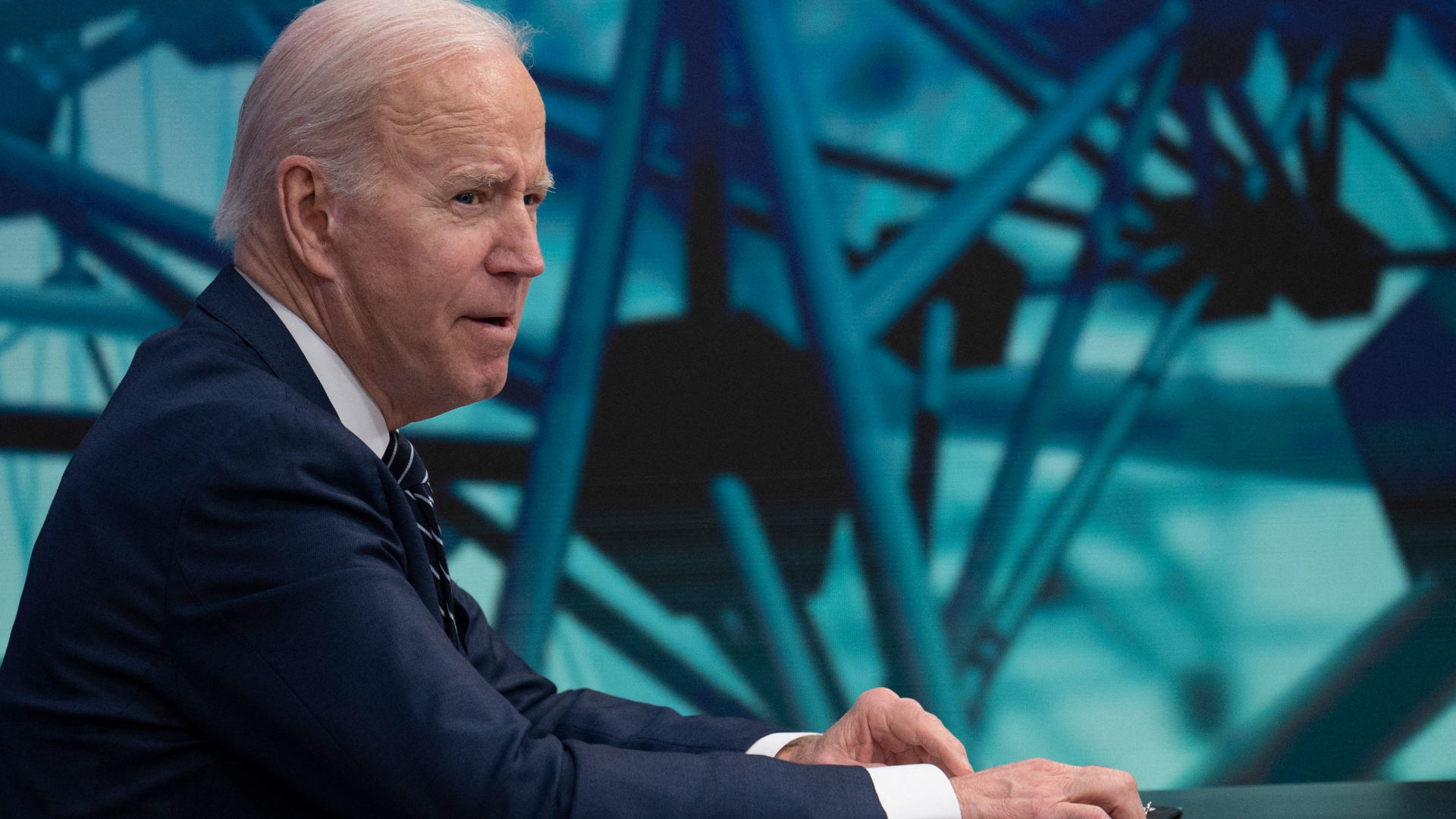Last month, an agency that President Joe Biden pledges will help “end cancer as we know it” came one step closer to fruition. Congress approved, and the president signed into law, a bill allocating a $1 billion budget for Biden’s new research enterprise: the Advanced Research Projects Agency for Health, or ARPA-H, which aims to develop novel approaches to treat and prevent not just cancer, but also diseases like Alzheimer’s and diabetes. It’s an agency with curious historical inspiration, modelled on the Defense Advanced Research Projects Agency, or DARPA, a semi-independent agency developed in 1958 and steeped in the Cold War culture of secretive high-tech military projects. Biden explained that, like DARPA — which brought us “everything from the internet to GPS and so much more” — ARPA-H is designed to support the incubation and development of “ideas so bold” that no other funder would possibly take a risk on them.
Far from being revolutionary, though, ARPA-H is structurally remarkably reminiscent of an endeavor started more than 50 years ago when then-President Richard Nixon declared war on cancer in his 1971 State of the Union address. Like Nixon’s war, Biden’s present-day mission to conquer cancer seems destined to fail.
Then as now, political pressure for Nixon to act forcefully on cancer came from outside the scientific establishment. The driving force was Mary Lasker, a lobbyist whose dedication to health reform predated her interests in cancer. Lasker had been an active advocate for Harry Truman’s ultimately failed national health insurance plan. And it was perhaps her dismay over that setback that led her to view research — rather than health care shifts — as the more productive avenue for transforming America’s health. With her husband, adman Albert Lasker, she started the Lasker Foundation in 1942 to promote and develop her medical research agenda. Around the same time, the Laskers effectively took over the American Cancer Society (known as the American Society for the Control of Cancer at the time), ousting its board of directors and shifting its emphasis from education to research.
Mary Lasker’s ideological fight to support cancer research took on new meaning when Albert Lasker died of colon cancer in 1952. Inspired by Solomon Garb, a pharmacologist who had equated curing cancer to “putting a man into orbit around the Earth,” she decided on a campaign of public pressure that would insert cancer research into what she saw as its rightful place, alongside the space race, on the nation’s agenda.
Lasker founded the Citizens Committee for the Conquest of Cancer, chaired by Garb himself. In December 1969, the committee needled Nixon with a now famous full-page advertisement in several newspapers, including The New York Times: “Mr. Nixon,” it read, “you can cure cancer.” By March 1970, the Senate had established a Panel of Consultants for the Conquest of Cancer, dominated by representatives from the business world. The burgeoning pharmaceutical industry was especially well represented — from the Rockefeller Brothers Fund, to the pharmaceutical bigwig Elmer Bobst, to Benno Schmidt, a venture capitalist who served as the panel’s chair.
The panel’s report, which paved the way for Nixon to sign the National Cancer Act, recommended increasing annual federal cancer research funding to $1 billion by 1976. The Act itself then elevated the status of the director of the National Cancer Institute, making it a position that reported directly to the president. In doing so, it seemed to answer Lasker and Garb’s call to elevate cancer research to a level on par with Earth orbits and moon landings. As Nixon himself put it in his 1971 State of the Union address, “The time has come in America when the same kind of concentrated effort that split the atom and took man to the moon should be turned toward conquering this dread disease … Let us make a total national commitment to achieve this goal.”
The research supported under the National Cancer Act — focused primarily on the molecular biology of cancer — did facilitate some breakthroughs. It led, for instance, to the discovery of oncogenes, genes that can transform a cell into a tumor cell. But ultimately, Nixon’s war on cancer was lost. Cancer was not conquered in time for the country’s bicentennial, as many thought it could be, just as it is still not conquered now. The promise that a deep dive into the molecular structure and function of the cell could solve the mysteries of cancer proved unfulfillable.
The molecular biologists thrust onto the frontlines of the war on cancer knew this from the outset. The outspoken James Watson offered his own acerbic reframing of the new funding stream in 1975, describing it as “piles of soft money” given out for those willing to show not real results but “perpetual enthusiasm” for the prospect of curing cancer. The war on cancer was not comparable to a moon landing. Indeed, most cancer research, according to Watson, was an “intellectual graveyard.” Patients were left waiting for breakthroughs that never materialized.
By the 1990s, the jig was up. Amid growing skepticism among breast cancer patients, the San Francisco-based group Breast Cancer Action, or BCA for short, put forward a different paradigm for cancer research. Founded by terminally ill women and led for 15 years by the iconoclast Barbara Brenner, the organization was among the loudest critics of mainstream cancer research efforts. As they saw it, part of the problem was structural: Top-down research of this sort denied patients and researchers working outside of the well-known academic-industrial complex any real say in defining the cancer research agenda. A prominent concern was that much of that research treated cancer as a problem whose causes, symptoms, and solutions were all contained within the human body. The BCA proposed that cancer researchers should adopt a more collaborative and holistic approach that focused not just on the inner machinery of the cell but also on external and environmental factors that played a large role in causing cancer in the first place. Prevention in particular ought to be a watchword of cancer research.
One of their proposals to restructure cancer research was the Rachel Carson Project, named for the influential author of “Silent Spring,” who famously revealed to the world the dangers of pesticides. The project envisioned the creation of a virtuous circle of cancer research. Research would be conducted in cancer centers staffed with both physical and social scientists. Discoveries would not be patentable, so that profits generated by government-produced drugs would be reinvested into prevention efforts. Crucially, BCA’s vision of this future of cancer research excluded the pharmaceutical and corporate concerns that, then as now, often drive and delimit the structure and scope of cancer research. By refusing to take donations from these entities, BCA freed itself to explore entirely new models of cancer research that treated cancer as an ecological, social, medical, political, and personal problem.
A recent policy paper explaining ARPA-H’s agenda gives some reason to hope that it may be more attentive to the societal causes that BCA and other organizations highlighted. But the structure of ARPA-H is worrying: The choice to locate its model in the quintessential research apparatus of the Cold War period, DARPA, seems dangerously poised to double down on the approach that ultimately made Nixon’s war on cancer, as one commentator put it, a “medical Vietnam.” Indeed, the president’s recent remarks suggest that the government’s fundamental philosophy toward cancer — grounded in a false sense that cancer could be cured if only there were more money, less oversight, more innovation, and more high-risk research — hasn’t changed much since Nixon. Curing cancer is still medicine’s most prized pursuit, a goal imbued with nationalism and simplistic notions of success and failure.
If the history of cancer research and grassroots activism teaches us anything, it is that ARPA-H is not positioned to deliver on Biden’s promise to end cancer as we know it, even if some breakthroughs will surely come.
Grazia De Michele is a historian and health activist. After being diagnosed with breast cancer at age 30, she decided to work towards a second Ph.D. on the history of medicine at the University of Genoa. Her research focuses on the history of breast cancer at the turn of the 21st century as seen through the eyes of the grassroots organization Breast Cancer Action
Caitjan Gainty is a historian of health and health care at King’s College, London. She is the founder of the Healthy Scepticism project, which aims to produce a new and more inclusive history and contemporary of health care by taking seriously the lines of critique put forward by its critics, doubters, dispossessed, antagonists, and other medical outsiders over the 20th and 21st centuries.












Comments are automatically closed one year after article publication. Archived comments are below.
Most people would be much better informed if they had awareness of what the “war on cancer” movement does NOT raise awareness about.
Knowing that big cancer charities (Komen, American Cancer Society, etc) are large self-serving businesses instead of “charities” or that these groups suppress critical information on cancer, such as the known causes of cancer (instead they talk about “risk factors” of cancer) or that many “breast cancer survivors” are victims of harm instead of receivers of benefit, or that they’ve been intentionally misleading the ignorant public with deceptive cancer survival statistics, or that government health bodies such as the NIH are merely a pawns for corporate medicine, etc is a good start to get to the real truth (read this scholarly article’s afterword on the war on cancer do a search engine query for “A Mammogram Letter The British Medical Journal Censored” by Rolf Hefti (& scroll down to the afterword on this ‘war’).
The reality is the war on cancer has been, by and large, a complete failure (read Dr. Guy Faguet’s ‘War on cancer,” Dr. Sam Epstein’s work, or Clifton Leaf’s book, or Siefried’s work on this bogus ‘war’). The criminal medical establishment falsely self-servingly claims and distorts a ‘win’ in the bogus ‘war on cancer’ when the only truly notably win is a reduction in lung cancer due to a huge reduction in smoking, which has nothing to do with their treatments. Lying is their mode of operation
Biden might also want to end the production and use of depleted uranium ammunition if he’s serious about ending cancer.
I guess there is some value pointing out that more money doesn’t necessarily fix problems. But the parallel to Nixon’s effort only goes so far. The basic idea, which is being pursued by many researchers, is to leverage the possibilities of mRNA vaccines to attack multiple proteins associated with particular tumor types. There’s no guarantee this will work, but it certainly makes sense to try. There’s a long article on the subject in this week’s Science.
Research that there were very few cancer cases before vaccines and you will find the truth.